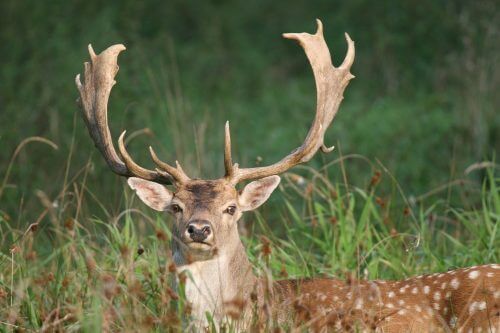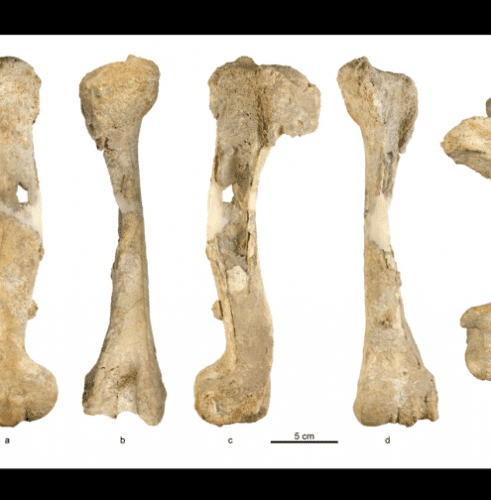Researchers from the Hebrew University have found the first evidence of the existence of a terrestrial species, a type of ancient elk, in the Kinneret area as early as 9 million years ago

A group of researchers from the Institute of Earth Sciences, the National Nature Collections of the Hebrew University and the Geological Institute have uncovered the first evidence of the existence of a terrestrial species, a type of ancient elk, in the Kinneret area already about 9 million years ago. The discovery was made as part of the doctoral theses of Alexis Rosenbaum and Dan Shaked-Galband from the Institute of Earth Sciences, Hebrew University, who individually reconstructed the surroundings of the Middle Jordan Valley in the Nahal Hagal area. During their research, which dealt with the properties of the ancient Lake Kinneret and the mapping and reconstruction of the types of molluscs that lived in it and the characterization of their stratified environment, the researchers found in one of the assemblages a humerus (humerus) of what looks like an ancient stag. The bone was partially eroded and submerged in coastal sediment, and the hypothesis is that the animal probably died on the shores of the lake and was eroded by its waves.
Although the presence of an ancient elk is not rare in assemblages of the same time, this is the first time that such remains have been discovered in Israel. The reason for this lies, apparently, in the processes of weathering and burial. The presence of the ancient elk bone suggests a world rich in terrestrial animals known from other regions of the Levant and the Mediterranean basin. Moreover, it was the development of freshwater bodies during the late Miocene period in the Mediterranean basin that enabled the distribution of moose from Asia to the west.

Lake Kinneret is one of the oldest lakes in the world and the body of water we know is actually a remnant of 'Bira Lake', the ancestor of Lake Kinneret that existed in the Jezreel Valley, the Lower Galilee and the Kinneret Valley about nine million years ago. It stretched from the Golan Heights in the east to the Tivon area in the west and covered the area that is now elevated in the Lower Galilee. The work of the researchers was to reconstruct the extent of the lake and characterize the composition of the water that filled it (fresh to slightly salty water) while characterizing the shells that lived in its waters.
The reconstruction of history and the properties of ancient water bodies in Israel were done in the past as part of studies on the geological and environmental history of the region of Israel. Studies of this type are of great importance for understanding the climate changes in our regions in the last millions of years and for understanding the development of the Mediterranean Sea which we are on the edge of. During the period of Agam Bira, the Mediterranean Sea penetrated several times into the low areas of the Jezreel Valley, the then Lower Galilee and the Kinneret Valley. These intrusions led to the deposition of thick layers of salt in the low places such as the Kinneret Basin. By determining the time of infiltration of the sea and its effects on the population of molluscs and the species that lived in it, it is possible to understand and conclude a lot about the history of the stratification in the region as well as the climatic changes and global warming. For example, in other times the lake was sweeter and it was possible for animals to reach its edges, such as the ancient elk found among the sediments of Lake Beera.
More of the topic in Hayadan:

One response
Interesting, but it must be assumed that the researchers are from the university
know the difference between species and type,
That's why it's hard to understand the confusion
It says: "A terrestrial species, a type of ancient elk"
type or sex?
It was appropriate to be precise!